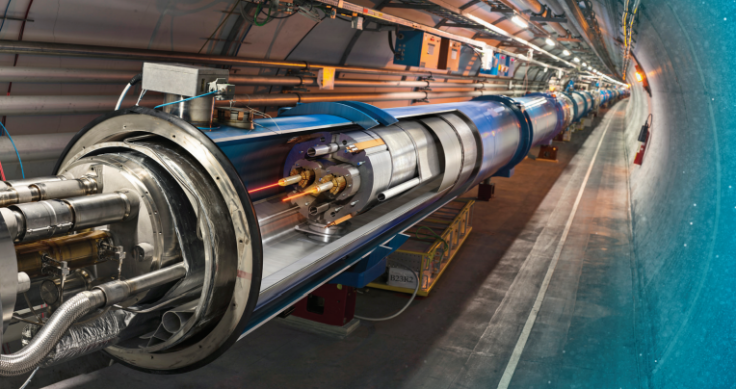Large Hadron Collider Update: CERN Prepares For Heavy Ion Collisions With Proton 'Reference' Run

In the latest step toward carrying out collisions of lead ions in the nearly 17-mile ring of the Large Hadron Collider (LHC), the operations team at CERN on Thursday began colliding protons at the lower energy of 2.51 teraelectronvolts (TeV) per beam to provide a baseline reading.
Earlier this month, CERN announced that it had successfully completed the “proton run” for this year, after accelerating bunches of protons to a record energy of 13 TeV -- or 6.5 TeV per beam -- breaking its 2012 record of 8 TeV collisions, which had led to the discovery of the Higgs boson -- also known as the “God Particle.”
However, as CERN explained in a statement released Thursday, collisions between the much heavier lead ions are way more complex than those between single protons.
"A lead nucleus in the LHC has 82 times the energy of a proton," accelerator physicist John Jowett said, in the statement. “But that energy is distributed among its 208 nucleons (the protons and neutrons that make up the lead nucleus). As 82 divided by 208 is 0.39, it follows that one proton or nucleon in a colliding lead nucleus has just less than 40 percent of the energy of an independent proton colliding.”
In order to glean what proton-proton collisions during the upcoming lead ion collisions would look like, the energy of the proton beam was adjusted slightly downwards during Thursday’s proton “reference” run. Later, when the lead ion collisions begin, CERN physicists will compare their data with previous measurements from proton-proton, as well as proton-lead, collisions.
“The proton-proton reference data being taken this week is at 2.51 TeV per beam, which is the corresponding energy for protons. So finally the experiments will be able to make precise comparisons among data sets with three different combinations of particles colliding at the same effective energy,” Jowett said, in the statement.
Scientists hope that colliding lead ions would help them recreate conditions that existed in the primordial universe, when it was composed entirely of a hot, dense soup of quark-gluon plasma. In order to recreate these conditions, massive ions -- such as gold or lead -- would need to collide head-on at extremely high energies that only a gigantic particle accelerator like the LHC can achieve.
The debris of these collisions might also yield exotic particles like pions, kaons, antiprotons and antineutrons, which may provide scientists clues to physics beyond the Standard Model.
© Copyright IBTimes 2024. All rights reserved.






















